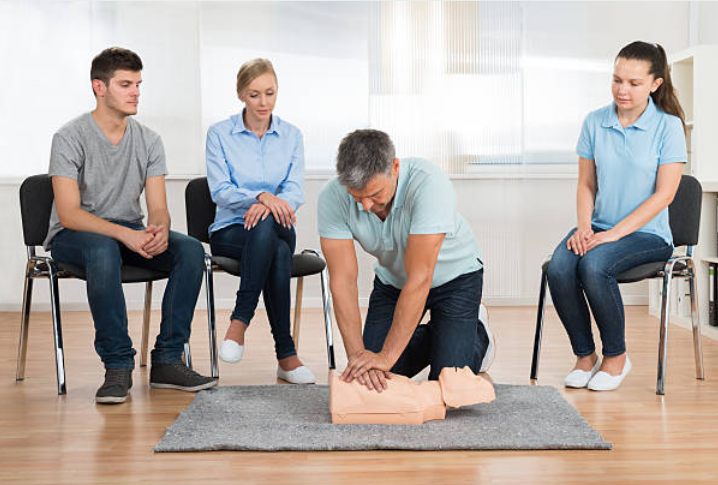
Teachers and professors can benefit hugely by knowing CPR. It is an easy and simple procedure that can be administered during the most critical time when waiting for paramedics to arrive, and quite frankly, it saves lives.
CPR class can teach teachers all the steps necessary to save a life should the situation arise potentially. Many medical emergencies demonstrate just how many Americans still do not know CPR, which in many cases causes onlookers to be unable to react during the most critical time of a heart event. Learning the process of calling 911 immediately, then beginning chest compressions at a rate of 100 per minute, combined with mouth to mouth resuscitation increments, can also help provide the paramedics with valuable information regarding the time that has passed since the paramedics arrived.
A teacher or instructor providing CPR can prevent brain damage that can occur due to a lack of oxygen to the brain until medical help arrives. This easy procedure can ensure that the victim survives the heart event and return to a normal life. Everyone (particularly in large institutions like schools, colleges, or universities) needs to know CPR in an emergency situation.
CPR is only effective if administered within six to seven minutes after the cessation of blood flow through the victim’s body. It can most certainly take paramedics longer than six to seven minutes to arrive on the scene, making it paramount that someone starts CPR while waiting for medics to arrive. Once medical help is on the scene, they can begin performing electrical shock defibrillation on the heart, which will hopefully restart it. And thanks to the CPR being administered before they arrived, the victim may survive and be far more likely to return to his normal lifestyle.
Why Do School Teachers Need To Have A CPR Certification?
CPR formal training is becoming mandatory for teachers. Most states, including California and Washington DC, require school teachers to train CPR and First Aid. Some institutions add it to the teaching certificate curriculum as part of certification or re-certification. The CPR certification may vary from a requirement to having a certification. For example, in California, teachers must be certified in CPR to receive their teaching credentials, but most school districts in California do not require them to maintain their certification.
If no one in school knows how to perform CPR, it could put students at risk since choking, asthma, and anaphylactic shock are breathing problems that could lead to cardiac arrest. In fact, at least 12,000 children are transported to hospitals each year from food choking injuries. This data shows that life-saving skills are something all teachers, especially public school teachers, cafeteria workers, and other school staff need to know.
Read the full article here.
| Enroll Now for Online CPR/AED Training and Certification Classes at just $19.99. |